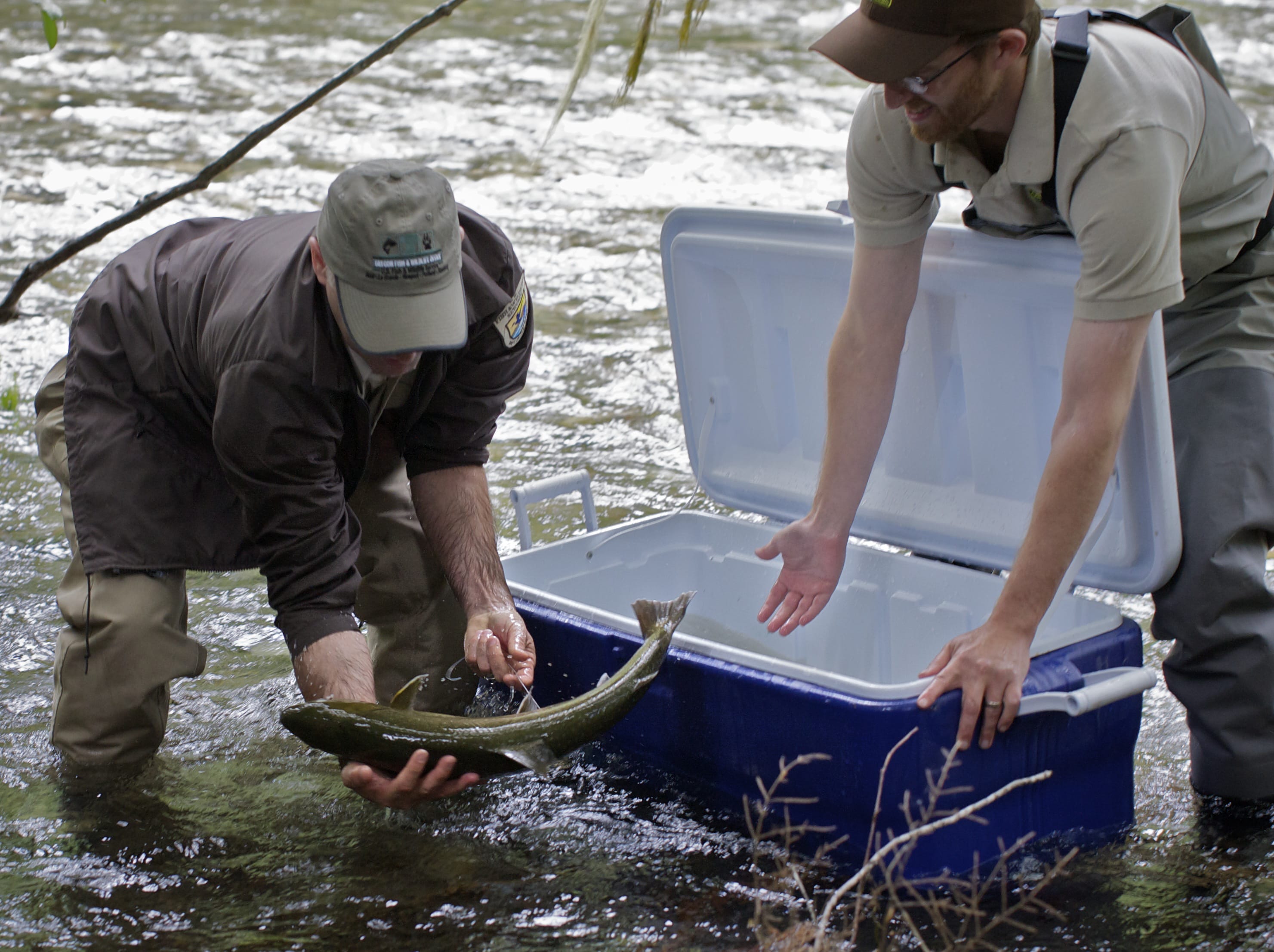GRANTS PASS, Ore. — The Obama administration is offering a new approach to saving the bull trout, a fish whose need for clean and cold water has put it in conflict with logging, mining and grazing in the Northwest.
The draft recovery plan posted online Wednesday by the U.S. Fish and Wildlife Service eliminates numerical goals for rebuilding populations, recognizes that climate change makes losing some populations inevitable, and focuses on fixing threats to habitat and genetic diversity.
The public has 90 days to comment, and then another draft will be issued. After another public comment period, a federal court settlement calls for a final plan to be issued by Sept. 30, 2015.
Michael Garrity of the conservation group Alliance for the Wild Rockies says if the elimination of numerical goals stands, they will be back in federal court.
“Conservation biology says if they are going to drop those goals, they are not going to recover bull trout,” Garrity said. “It’s an extinction plan, not a recovery plan.
“They are writing off areas based on politics, not science.”
The service issued draft recovery plans in 2002 and 2004, but never got to the point of a final plan. Alliance for the Wild Rockies and Friends of the Wild Swan sued, and Fish and Wildlife agreed last month to issue a draft plan by the end of September.
Lead biologist Stephen Duke says the adverse effects of ongoing logging, mining and grazing have mostly been addressed since the bull trout was listed as a threatened species in 1999. Key issues still to be fixed include connecting fragmented habitats and improving fish passage so bull trout in different areas can breed together, and eliminating threats from non-native fish such as brook trout.
He adds that once the remaining problems facing bull trout are addressed, they should achieve stability in the six recovery areas designated in Washington, Oregon, Idaho, Montana and Nevada.
But the elimination of specific numbers of fish to define recovery was a disturbing development to Noah Greenwald of the conservation group Center for Biological Diversity. He said numerical goals have been standard in recovery plans, though conservation groups have long been concerned they have been set too low.
“It sounds like they are going to leave the patient in the ICU forever and call it good,” he said.



